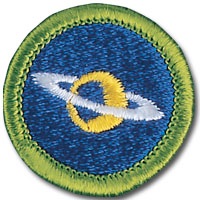Solar Eclipses






Astronomy Merit Badge Supplementals
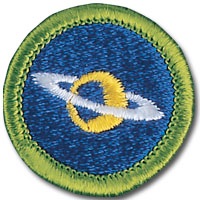
(updated Sun. Feb. 5, 2017; created Tue., Aug. 22, 2017)
This is an extension of
the Astronomy Merit Badge page.

This page seeks to share eclipse basics, interesting facts about solar eclipses, and to also share links some great materials, primarily those of GreatAmericanEclipse.com.
The information comes primarily from Bob Berman, Wikipedia, and GreatAmericanEclipse.com.

A solar eclipse occurs when the sun is eclipsed by the moon... the moon is between the sun and earth and the moon “blots out the sun” when the moon’s shadow moves across the earth’s surface.
Alignment: Sun - Moon - Earth
Solar eclipses only occur at the time of a new moon.
“Solar Eclipse Geometry”
(as copied from Astronomy Merit Badge Page)
-
d.With the aid of diagrams, explain the relative positions of the Sun, Earth and the Moon at the times of lunar and solar eclipses...
from the October, 2014 issue of Astronomy Magazine:
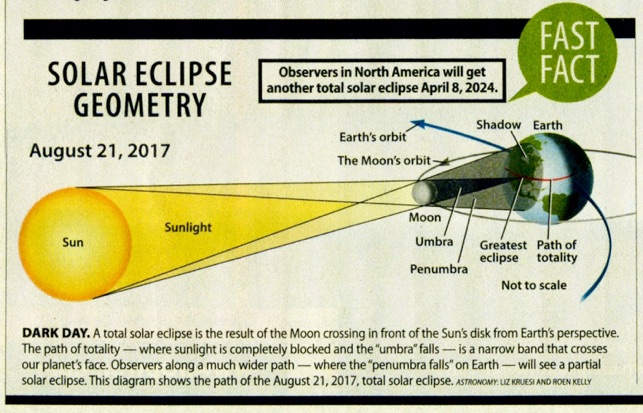
See also:
https://www.merriam-webster.com/dictionary/solar%20eclipse
(a lunar eclipse is when the moon “disappears” into the earth’s shadow...
Alignment: Sun - Earth - Moon
lunar eclipses only occur at the time of a full moon)

Eclipses do happen because of the moon’s position with respect to the Sun and the Earth.
This section provides some additional facts about eclipses, mostly from Mr. Bob Berman, aka “Sky Man Bob.”
Much information on this page comes from the writings of Mr. Berman. I do not know him, beyond sharing a couple emails once, but I am impressed by his ability to help people readily understand concepts about astronomy. I share so many of his insights because they are so simple and clear and I just cannot think of a better way to disseminate all the great things he shares than to just share them with you directly.
“Robert Berman, known as Bob Berman, is an American astronomer, author, and science popularizer. He runs Overlook Observatory at his home in Woodstock, New York, USA. He was an adjunct professor of astronomy at the liberal arts college, Marymount Manhattan College, from 1996 to 2000 and has appeared on CBS This Morning, the Today Show, and the Late Show with David Letterman.”
source: https://en.wikipedia.org/wiki/Bob_Berman
Bob Berman has written several great books, most about astronomy.
Two of those books provide great insights into Eclipses.
One of those eclipse-related books is:
“Secrets of the Night Sky: The Most Amazing Things in the Universe You Can See with the Naked Eye”
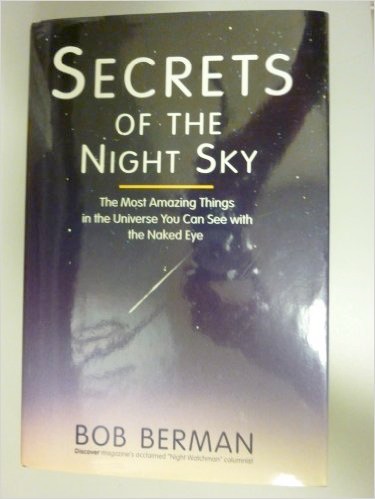
image source:
https://www.amazon.com/Secrets-Night-Sky-Amazing-Universe/restofurl
as purchased from Amazon seller fireproofbookemporium
Eclipses do not happen each month because the moon’s orbit around earth varies 5%... sometimes it is above the equator and sometimes below...
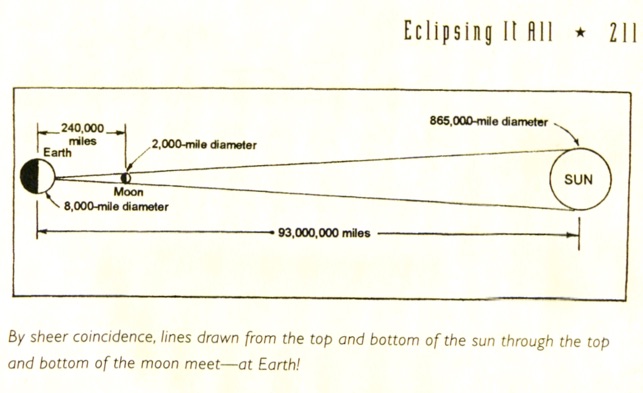
Image source:
“Secrets of the Night Sky: The Most Amazing Things in the Universe You Can See with the Naked Eye,” Bob Berman, Copyright 1995; p. 211, top of the page.
(order your copy at: https://www.amazon.com/gp/product/0688127274/ref=oh_aui_detailpage_o03_s00?ie=UTF8&psc=1)
Mr. Berman writes:
“The sun is four hundred times larger [than the moon], but also four hundred times farther from us. This fact alone allows the moon to fit perfectly over the sun’s face during an [solar] eclipse. Not too much to block our the beautiful inner corona, and not too little to leave the sun’s blinding photosphere uncovered. This bizarre coincidence does not hold for any other planet, and indeed was not so here on Earth prior to the advent of humans, thanks to the moon’s gradually increasing distance as it spirals away like a bent sky-rocket at the rate of an inch a year. And if we are to explore solar eclipses, those most awesome and unlikely works of nature, we may as well do so in this season when the sun is most prominent.”
“...”
“It doesn’t happen often because of the moon’s 5-degree orbital tilt; it misses the sun almost every time it passes by. And even when it does block the sun, the moon’s shadow, tapering like a chopstick to barely touch the ground, can be fully viewed from just a tiny section of earth. If you’re luck enough to be in the right place at the right time, you experience a total solar eclipse, one of the greatest spectacles the eye can behold. From a much wider area it’s merely a partial eclipse, a fairly common sight that requires eye protection.”
Source:
“Secrets of the Night Sky: The Most Amazing Things in the Universe You Can See with the Naked Eye,” Bob Berman, Copyright 1995; pp. 211-212.
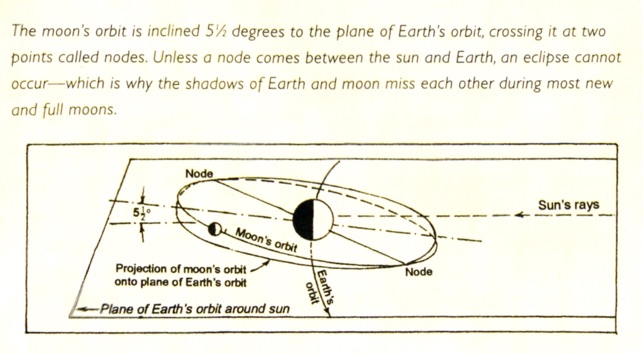
Image source:
“Secrets of the Night Sky: The Most Amazing Things in the Universe You Can See with the Naked Eye,” Bob Berman, Copyright 1995; p. 211, bottom of the page.
(order your copy at: https://www.amazon.com/gp/product/0688127274/ref=oh_aui_detailpage_o03_s00?ie=UTF8&psc=1)

Lunar Fun Facts
As shared in Astronomy magazine:
Moon motion
Watching our satellite as it glides in front of the Sun is a moving experience.
By Bob Berman | Published: Tuesday, May 30, 2017
“But it’s the Moon’s motion that holds our attention. As it lopes through space at just 1 kilometer per second, its nearness makes that movement more than obvious: Of the universe’s substantial bodies, it’s the very fastest in terms of angular shift.
“In a single minute, the Moon glides against the background stars by the apparent diameter of Jupiter or Venus. In an hour, it moves its own width against the stars. The Moon is the only celestial body that fully shifts its position hourly. Its closeness alone makes its unimpressive orbital speed of 2,288 mph (3,682 km/h) visually obvious.
This motion reaches an exciting climax August 21, during the eclipse. No doubt, a major source of amazement will be seeing the Moon bustle as it glides in front of the Sun, and then later restores its light. You can actually see it moving.
“True, the Moon’s angular speed only equals that of a wall clock’s minute hand. And yes, you can also observe the Moon’s orbital motion during conjunctions and near conjunctions. But its motion during a total solar eclipse is like nothing else. And while other movements figure prominently in creating the magical eclipse stewpot — our planet’s spin nearly doubles the eclipse’s length — it is the Moon’s responsibility for creating the precise three-dimensional lineup. This exact alignment of Sun, Moon, and your spot on Earth conjures a palpable effect on the human soul. ”
source: http://www.astronomy.com/magazine/bob-berman/2017/05/moon-motion

GreatAmericanEclipse.com provides some great insights into eclipses, too, including this description and illustration of how/why the moon’s shadow does not always darken the earth. This nicely compliments Mr. Berman’s illustrations.
“This diagram published in the 1855 book by Asa Smith, Smith's Illustrated Astronomy,...”
“You can examine more of the excellent eclipse diagrams from Smith's Illustrated Astronomy in the gallery below. Although published in the 19th century, these attractive diagrams still have the explanatory power to make eclipse concepts clear.”
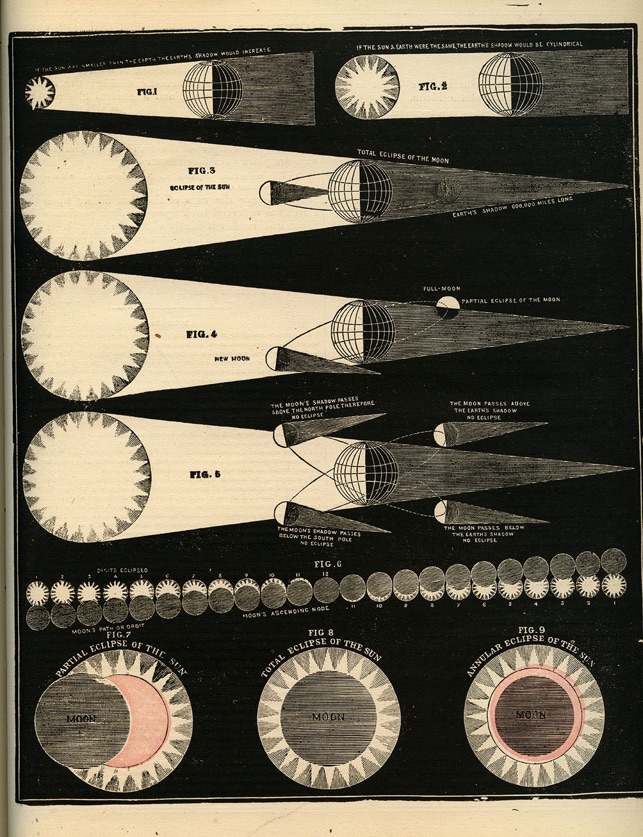
image source:
https://www.greatamericaneclipse.com/basics/
Credit: 'Michael Zeiler, www.GreatAmericanEclipse.com'

Astronomy Magazine, in their May, 2017 issue, shows these views of solar eclipse geometry.
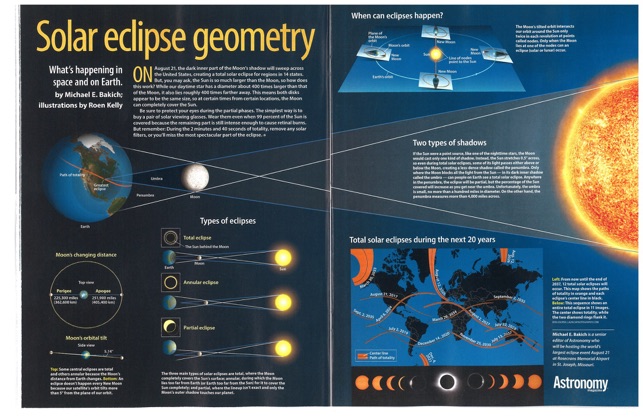
p. 34 & p. 35, scanned together.
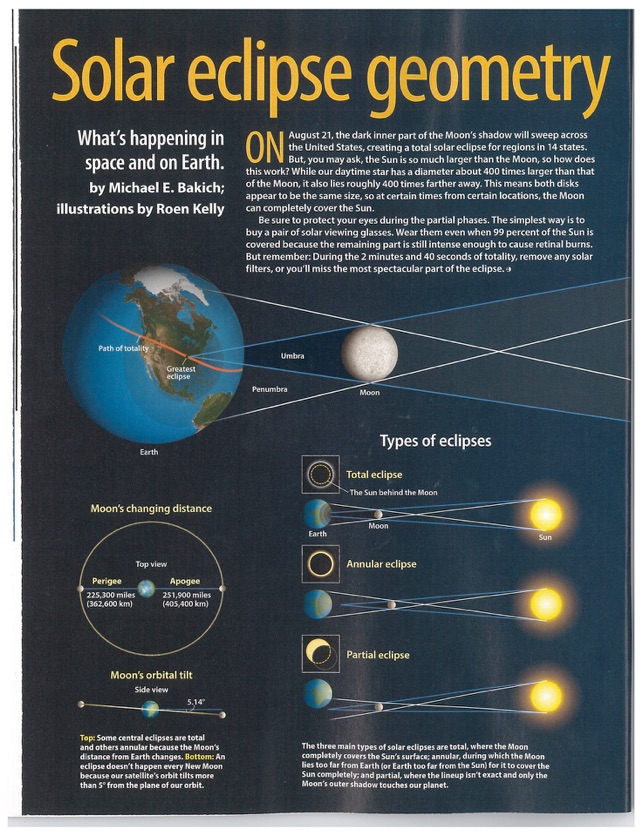
-
p.34
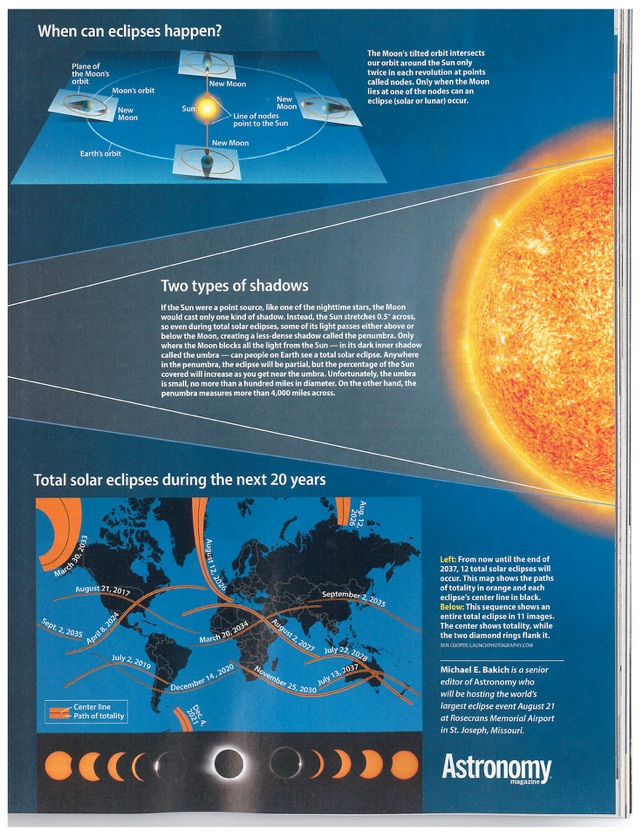
p. 35

What might the eclipse look like?
During Christmas Break, 2016, the Greater St. Louis Area Council (GSLAC) of the Boy Scouts of America (BSA) hosted the fifth annual STEM U at UMSL / the University of Missouri - St. Louis.
STEM U offers Scouts the opportunity to earn STEM-related merit badges and Boy Scout Nova awards.
Several hundred Scouts participated. It was another great STEM U, for Scouts and Merit Badge Counselors alike.
Two of us Astronomy Merit Badge Counselors worked with UMSL’s Dr. Wilking
to host the Scouts (and some of their parents) in the UMSL Planetarium ( . Dr. Wilking helped the department fund and purchase a new planetarium in the past couple years. The new planetarium has some impressive capabilities the old one just did not have:
-
-represent the campus buildings along the bottom of the ceiling, to provide perspective as we looked at the night sky
-
-display the shapes (dragons, hunters, bulls, hunting dogs, etc.) along with the stars
-
-display the names of the constellations next to the stars... and rotate the names as the stars rotated across the sky, keeping the words all “right-side up” to our eyes
-
-the presentation of the relative sizes of some well known stars, showing us our sun as a small dot while Antares, Betelgeuse and several other stars presented such incredibly large sizes that they ultimately could not even project on the dome.
-
-the three dimensional positions of the sun, earth and moon, with clear depiction of the moon’s five-degree orbital tilt and how that tilt leads to eclipses, but not every month because of the tilt
I was able to use my Olloclip fish-eye lens to capture these images, which represent:
-
1)a view of the eclipse from earth

-
2)a view of the eclipse, as the moon starts to cover the sun

-
3)a view of what the eclipse could look like if you were orbiting high above the earth


When are the next eclipses going to occur?
The next total solar eclipse will happen in 2019, in South America:
https://www.timeanddate.com/eclipse/list.html
The next total solar eclipse in the US will be in 2024, and its path will cross some of the same locations in southern Missouri and southern Illinois as the Great American Eclipse of 2017:
“Total solar eclipse of [Monday] April 8, 2024 over Mexico, the United States, and Canada
The next total solar eclipse in the Americas comes on April 8, 2024. Totality first touches Mexico, enters the United States at Texas, cuts a diagonal to Maine, and visits the maritime provinces of Canada.”
For a map of southern Missouri and southern Illinois, please see:
https://www.greatamericaneclipse.com/april-8-2024/
-
-Credit: 'Michael Zeiler, www.GreatAmericanEclipse.com'
A full list of 5,000 years of solar eclipses can be found at:
https://eclipse.gsfc.nasa.gov/solar.html
Are eclipses any more dangerous to look at than the sun on any other day?
Answer, part 1:
“As a solar eclipse approaches, the mainstream media often will provide a variety of warnings and advisories against looking at the sun with bare eyes, as blindness could ensue. This has given most people the idea that eclipses are dangerous.
As a solar eclipse approaches, the mainstream media often will provide a variety of warnings and advisories against looking at the sun with bare eyes, as blindness could ensue. This has given most people the idea that eclipses are dangerous.
Not so!
It’s the sun that is dangerous — all the time! The sun constantly emits invisible infrared rays that can damage your eyes. Ordinarily, we have no reason to gaze at the sun. An eclipse gives us a reason, but we shouldn’t.The sun constantly emits invisible infrared rays that can damage your eyes. Ordinarily, we have no reason to gaze at the sun. An eclipse gives us a reason, but we shouldn’t.”
Answer, part 2:
“Despite the age-old wisdom, in the days after these dazzling events, doctors still report cases of blurry vision or even blind spots caused by peering at the sun. The injuries incurred are actually the same as when people stare at the sun on a normal day; the difference is people are particularly tempted to look up during an eclipse.”
Answer, part 3:
-
-Wear your solar glasses except during totality!
-
-And during totality, take off your glasses and take it all in (put the phones / cameras down and just look at it.
What do you see during a total eclipse?
The sun’s corona.
See this NASA site to learn more: https://eclipse2017.nasa.gov/sun
How to photograph the eclipse?
http://appleinsider.com/articles/17/08/19/how-to-shoot-the-aug-21-solar-eclipse-on-an-iphone
https://www.idropnews.com/news/solar-eclipse-iphone-photography-warnings-tips/47339/
https://9to5mac.com/2017/08/17/how-to-photograph-an-eclipse-with-an-iphone/
https://www.wsj.com/articles/yes-your-iphone-can-photograph-the-eclipse-1502393210 (you shouldn’t need to read the full article to understand the point it makes from the title)
https://www.nightcapcamera.com/how-to-photograph-the-solar-eclipse-on-your-iphone/

Mr. Berman’s other eclipse-related book is “The Sun’s Heartbeat, And Other Stories From the Life of the Star That Powers Our Planet.”
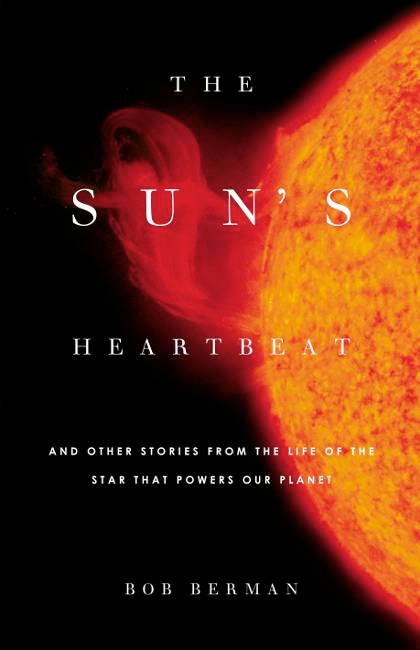
image source: http://skymanbob.com/category/articles/
as purchased from Amazon seller Best World Books: West.
I have been interested in Astronomy since I was young, and only when I read this book in 2015 did I first learn about a saros.
Mr. Berman describes saroses, and exeligmos, incredibly well on these pages from “The Sun’s Heartbeat...”
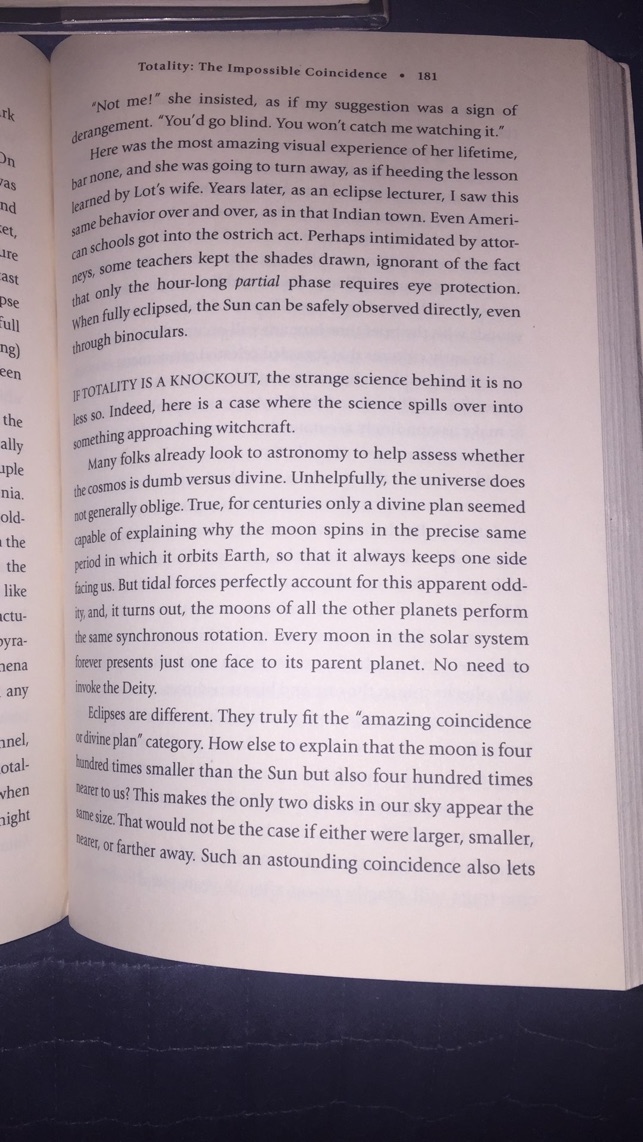
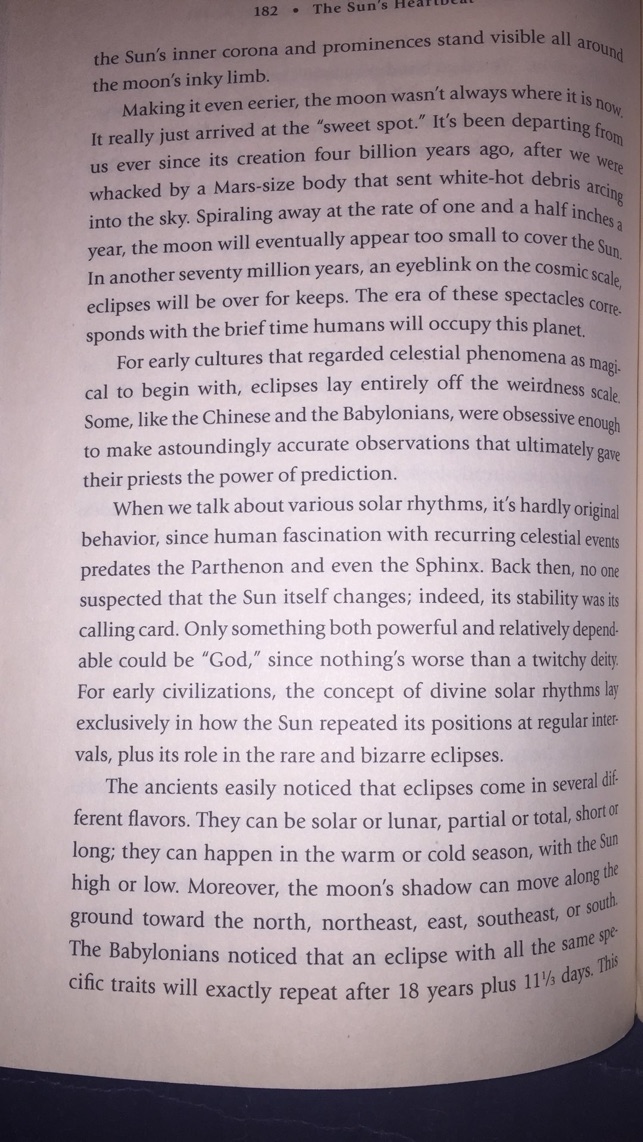
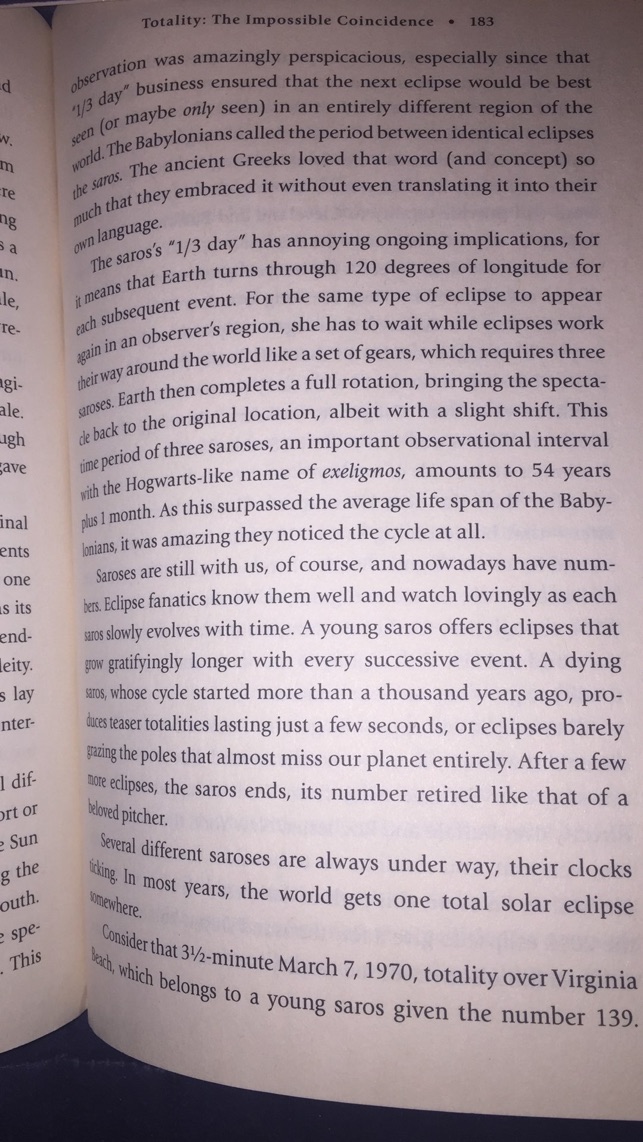
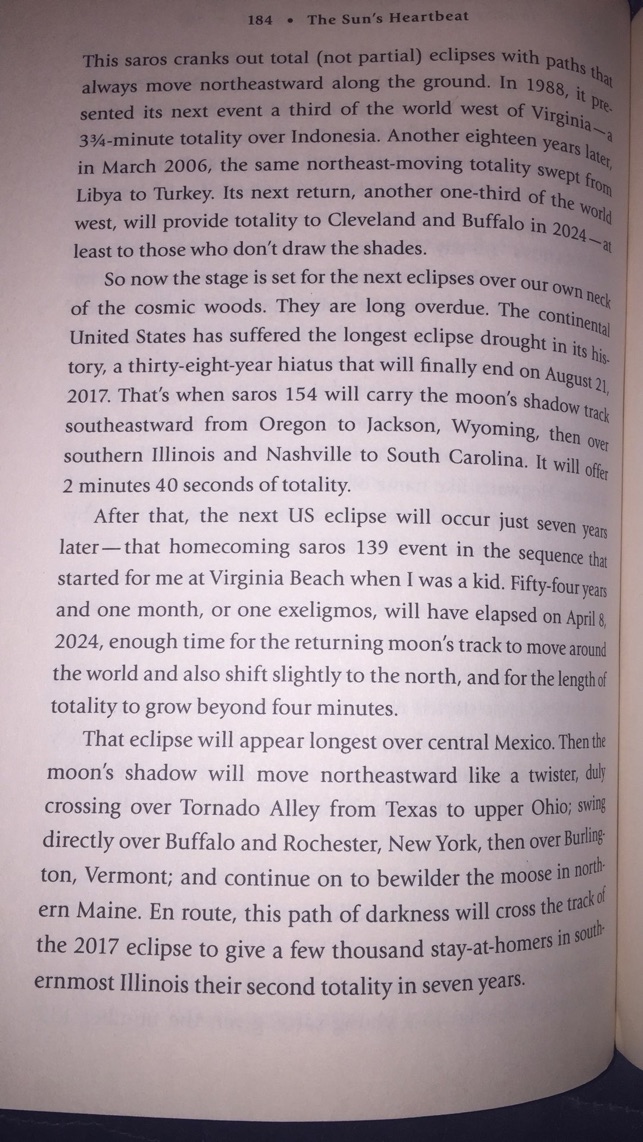
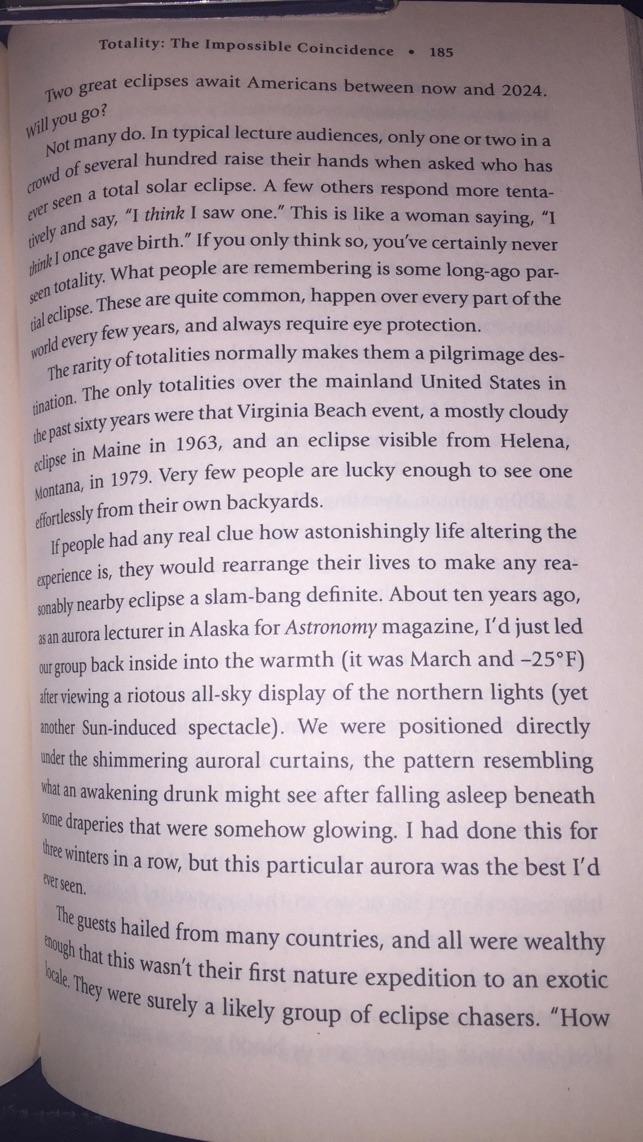
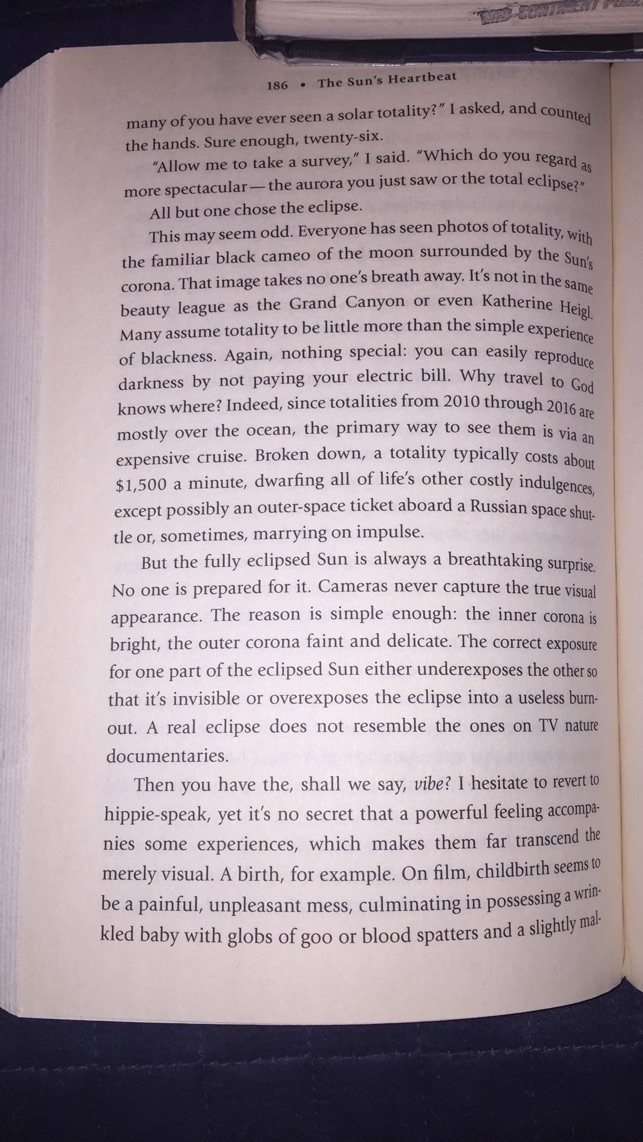
Source of these images:
“The Sun’s Heartbeat, And Other Stories From the Life of the Star That Powers Our Planet,” Bob Berman, Copyright 2011; pp. 181-186.
(order your copy at: https://www.amazon.com/gp/product/0316090999/ref=oh_aui_detailpage_o03_s00?ie=UTF8&psc=1)



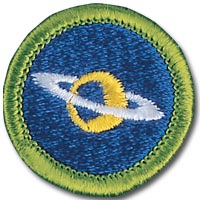
These are all of the links to the Astronomy Merit Badge pages:
Astronomy Merit Badge - Extra “Fun Facts”
Astronomy - Great American Eclipse
Astronomy - Great American Eclipse 2017

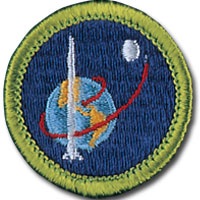
These are all of the links to the Space Exploration Merit Badge pages:
New Horizons - Mission Overview
New Horizons - Pluto Resources


The images from Mr. Berman’s “Secrets of the Night Sky...” and Outdoor Photographer were scanned directly from the book using the Halo Scanner Mouse - http://shop.halo2cloud.com/collections/computer-and-backup/products/scanner-mouse, which I received as a Christmas present from my mother in 2013.



Regardless your desire to pursue an astronomical career, it is hoped that you learned enough about astronomy through this merit badge to at least be interested to continuously look up at the sky in awe and wonder. If you pursue with enthusiastic interest, that’s great. If you do make a career in the field, GREAT.
May you be better off having completed your Astronomy Merit Badge than you were before you started.
